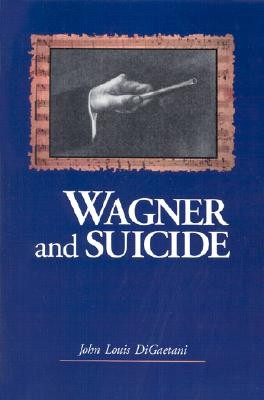
- We will send in 10–14 business days.
- Author: John Louis DiGaetani
- Publisher: McFarland & Company
- ISBN-10: 0786414774
- ISBN-13: 9780786414772
- Format: 15.7 x 22.5 x 1.2 cm, minkšti viršeliai
- Language: English
- SAVE -10% with code: EXTRA
Reviews
Description
Composer Richard Wagner (1813-1883) likely suffered from a manic-depressive disorder but in his time very little was known about mental illness, and suicide was not a topic for general discussion. Wagner was often plagued by extreme mood swings; he used his operas, especially the librettos, to express himself and his personal difficulties. This investigation of the suicidal themes in Wagner's life and operas--Die Fliegender Hollander, Tannhauser, Lohengrin, Tristan und Isolde, Die Meistersinger, the Ring cycle, and Parsifal--shows how manic-depressive illness, particularly the depressive part of it, affected Wagner's life and art. It also analyzes the influence of Giambattista Vico's theories of cycles (and how these theories appeared in Wagner's work), suicide as a theatrical and operatic phenomenon, and the way in which the theme of suicide has appeared in other works of the literary and performing arts.
EXTRA 10 % discount with code: EXTRA
The promotion ends in 23d.05:09:35
The discount code is valid when purchasing from 10 €. Discounts do not stack.
- Author: John Louis DiGaetani
- Publisher: McFarland & Company
- ISBN-10: 0786414774
- ISBN-13: 9780786414772
- Format: 15.7 x 22.5 x 1.2 cm, minkšti viršeliai
- Language: English English
Composer Richard Wagner (1813-1883) likely suffered from a manic-depressive disorder but in his time very little was known about mental illness, and suicide was not a topic for general discussion. Wagner was often plagued by extreme mood swings; he used his operas, especially the librettos, to express himself and his personal difficulties. This investigation of the suicidal themes in Wagner's life and operas--Die Fliegender Hollander, Tannhauser, Lohengrin, Tristan und Isolde, Die Meistersinger, the Ring cycle, and Parsifal--shows how manic-depressive illness, particularly the depressive part of it, affected Wagner's life and art. It also analyzes the influence of Giambattista Vico's theories of cycles (and how these theories appeared in Wagner's work), suicide as a theatrical and operatic phenomenon, and the way in which the theme of suicide has appeared in other works of the literary and performing arts.


Reviews